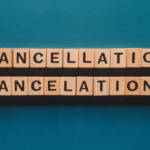When it comes to the words forward and forwards, many people wonder which one they should use. Both words are correct in some contexts, but their usage can vary depending on factors such as region, the style of writing, or the specific type of communication.
So, is it forward or forwards? Let’s dive in to clarify the differences, provide practical examples, and discuss the correct usage in different scenarios.
Understanding the Basics: Forward vs Forwards
At the heart of the debate between forward and forwards is their use as adverbs. Both words can describe movement or direction, but they can sometimes be used differently depending on where you’re located or the style of English you’re using. Essentially, both words share the same meaning, but they have slight differences in usage.
Forward as the Standard Form
In many cases, forward is the preferred form. This is especially true in formal contexts, where it tends to be used more frequently. Forward is also the form more commonly seen in American English. It’s the go-to word for many situations, including business emails, reports, and public speaking.
Forwards as the More Casual Form
On the other hand, forwards is often used in more casual speech and informal writing. It’s common in British English and sometimes even in Australian English or Canadian English, although not as universally. In these regions, you might hear someone say, “Let’s go forwards” or “We’ll look at this forwards.”
Regional Language Differences: The Great Debate
When it comes to regional language differences, the choice between forward and forwards can be influenced by your location.
American English
In American English, forward is almost always used. You’ll hear this in formal writing, emails, reports, and even in more conversational contexts. For example, if you’re writing an email to a colleague, you might say:
Example:
“I look forward to working with you on this project moving forward.”
Notice how forward is used here, even though “moving forwards” could be grammatically correct. Moving forward is simply more widely accepted in American English.
British English
In contrast, forwards is more common in British English, though forward is still widely used. However, in casual conversation, you may hear forwards more frequently, especially when describing movement or direction.
Example:
“I think we should move forwards with this plan.”
The use of forwards here feels more natural in British contexts, but both words are still grammatically correct.
Canadian, Australian, and New Zealand English
- Canadian English: Similar to American English, Canadians generally use forward in most contexts. However, forwards can appear occasionally in more informal settings.
- Australian English: Australians tend to use both forms, but forwards might be heard in casual contexts.
- New Zealand English: Like Australians, New Zealanders often use both forms, but forwards is more commonly found in informal speech.
Formal vs Informal Usage: Where Do They Fit In?
Formal Writing: Stick with Forward
In formal writing, such as business emails, professional letters, or academic papers, forward is almost always preferred. It’s seen as more polished and appropriate for these settings.
Example:
“I will forward the document to you once I receive the necessary information.”
Here, forward is used in a formal context to indicate the action of sending something.
Informal Writing: Forwards Can Work Too
In contrast, forwards can be used in more informal settings, such as personal emails, texts, or casual conversations. However, it’s important not to overuse it. While forwards sounds natural in speech, it can feel out of place in professional communication.
Example:
“Let’s think about this forwards and come up with a solution.”
This might be heard in a brainstorming session or a casual conversation. The tone is relaxed and conversational, making forwards a fitting choice.

The Role of “Moving Forward” vs “Moving Forwards”
Both moving forward and moving forwards are commonly used expressions. However, moving forward is the more widely accepted and formal phrase, especially in American English.
Moving Forward
In business contexts, moving forward refers to the idea of making progress, usually after addressing a challenge or completing a phase of a project. It’s used when you’re looking ahead to the next steps or planning the future.
Example:
“Let’s focus on the tasks moving forward and ensure we meet the deadline.”
Moving Forwards
Though less common, moving forwards can be used in the same way in informal settings. Some people in British English and Australian English might prefer this phrasing, but it’s not as universally accepted.
Example:
“We’ll continue to assess the situation moving forwards.”
In this instance, moving forwards carries the same meaning, but it’s slightly more relaxed and casual.
Grammar and Style Guide for Forward vs Forwards
When to Choose Forward
- In formal or business writing, always use forward. It sounds more professional and is the correct form in these contexts.
- When discussing movement or direction, forward is almost always preferred, especially in American English.
- In idiomatic expressions like “forward-thinking,” “looking forward to,” or “moving forward,” forward is the standard choice.
When to Choose Forwards
- In informal writing or casual speech, forwards can sound more natural.
- British English speakers may prefer forwards in some situations, especially when referring to movement or direction.
- Use forwards when the context is less rigid and more relaxed, such as in personal conversations, informal texts, or casual emails.
Forwards vs Forward: A Quick Table of Usage Guidelines
| Context | Forward | Forwards |
|---|---|---|
| Formal Writing | Preferred (e.g., business emails, reports) | Less common |
| Informal Writing | Correct but formal | More natural in casual speech |
| American English | Standard choice | Rarely used |
| British English | Correct but less frequent | More common in casual contexts |
| Movement or Direction | Common for both | Often used informally |
| Idiomatic Expressions | Always use forward | Never used in idioms |
Common Synonyms of Forward and Forwards
Both forward and forwards share synonyms that can be used depending on the context. Understanding these alternatives can help you vary your writing and verbal communication.
Synonyms for Forward:
- Onward
- Ahead
- Forth
- Toward (in certain contexts)
Synonyms for Forwards:
- Ahead
- Onward
- Further
Sentence Examples of Forward and Forwards
Here are some sentence examples to further illustrate the difference between forward and forwards:
Using Forward:
- “I’m looking forward to our meeting next week.”
- “Please send the file forward to the next department.”
- “We must continue forward with our plans to launch the new product.”Using Forwards:
- “We need to think forwards to ensure the project’s success.”
- “I’ll be traveling forwards to the next city tomorrow.”
- “Let’s move forwards with the discussion about future goals.”
Conclusion: Choosing Between Forward and Forwards
In the end, the choice between forward and forwards often depends on region, the formality of the communication, and the overall tone of the conversation. Forward is the safer, more universally accepted option, especially in professional and formal contexts. However, forwards can still be appropriate in casual, everyday conversations and is favored in certain regions like British English.
Whether you’re moving forward with a business project or simply describing the direction in which something is moving, both words serve their purpose. By following the usage guidelines and considering your audience, you’ll easily know when to use forward and when to go with forwards.

Steel Morgan is an experienced blogger passionate about language and writing. On Grammarcove. he shares his expertise in grammar, punctuation, and effective communication, making complex rules simple and accessible for readers. With a knack for clear explanations and engaging content, Steel aims to help others master the art of language.







